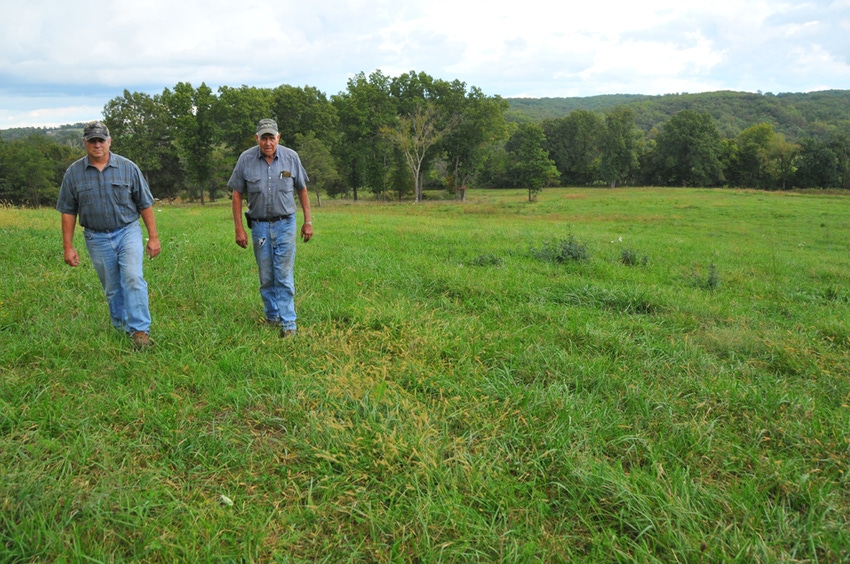Dairy farmer Tom Coats brought back his pasture from a 70 percent canopy cover of brush.
June 24, 2014

When Tom Coats bought pastureland neighboring his Mountain Grove, MO, dairy farm in 2005, he thought it just needed a brush hog. Set the brush back, let sunlight hit the grass, and maybe it would come around.
It didn’t.
“We brush hogged it every year [for six years] and weren’t making the changes we wanted,” Coats says. “All it did was cause the brush to put out new shoots.”
The density of blackberry, multiflora rose, buckbrush and honeylocust was increasing. So Coats decided on a different tact. He consulted the local MFA location in Ava, MO, and connected with MFA’s regional range and pasture specialist, David Moore.
Coats had stopped brush hogging and let the brush grow, which turned out to be a good thing. That increased the leaf surface available to catch herbicide. If the brush could catch enough of the right herbicide and move it to the roots, the brush would die.
“We let the brush grow for two years,” Coats says. “I’m sure the neighbors loved that because it was ugly.”

Dairy farmer Tom Coats (left) and his father, Jim, examine pasture they brought back from a 70 percent canopy cover of brush. Their family has milked cows every day since March 28, 1955.
In April 2012, he had MFA apply Chaparral™ herbicide tank-mixed with 2,4-D amine and Astute surfactant. They used Chaparral at the labeled rate of 2.5 ounces per acre with 2,4-D at 2 pints per acre.
From brush to grass
“We probably had 70 percent brush canopy over the field,” Coats says. “It was almost impenetrable. We couldn’t drive all over it, and you couldn’t see any grass in there.”
Coats knew fescue, orchardgrass and timothy was there, as well as some clover. Spraying should release the grasses from competition, but he knew it might kill much of the clover.
“I didn’t want to lose it, but we were at the point of having more weeds than clover,” he says.
Eighteen months later, Coats estimated his brush control at 80 percent or better. And he saw some clover popping up last fall, apparently from hard seed unaffected by the herbicide. He has improved pasture.
“We still have some problems to correct, but it’s headed in the right direction,” he says. “It’s a long way from where we were two years ago. We even did a little haying on it this year.”
Coats used the acreage as summer pasture for his dry dairy cows and heifers. Then he pulled those cattle off and stockpiled the fescue to winter dairy steers.
“Every year, we gross $40,000 in steer sales, and this will be part of that,” he says. “It’ll probably make three or four times more return than it did before.
“We got rid of most of the woody plants,” he says. “We weren’t going anywhere with brush hogging.”
Other trending stories in pasture management:
Quick Steps To Help Pastures Recover From Drought
6 Tips For Cost-Effective Weed Control
What Is Good Grazing Management?
About the Author(s)
You May Also Like



